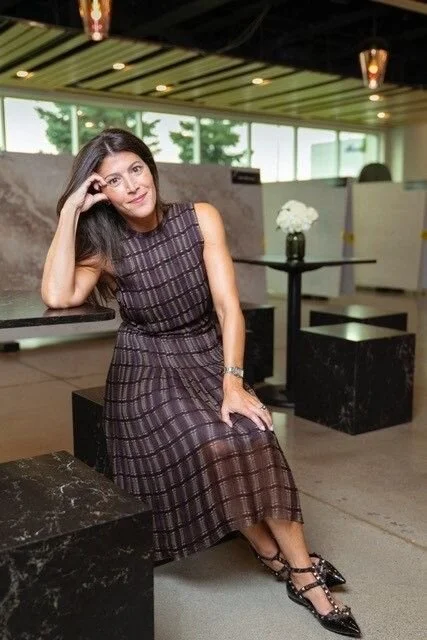Recognizing the critical interdependency of pedagogy, technology and the spatial environment for successful active learning, in 2013 CATS Cambridge began planning for a brand-new, state-of-the-art facility.
Factors Fueling a New Era for Campus Planning
What is the highest and best use of space on campus today? How can we ensure that the improvements we make appeal to our ‘customers’—students, faculty and staff—and keep them coming back for more? How does our brand go beyond school colors and evoke the true experience of our institution?
Watch: Designing the Student-Centric Campus - DLR Group
How we use design to support both physical and emotional aspects of the student experience on campuses around the country, as well as help our clients recruit the best faculty and staff.
Steelcase and Texas A&M Team up to Develop Furniture that Supports Education
In an effort to transform the learning environment to include both traditional lectures and student-led learning, while making technology an integral part of the equation, the department teamed up with Steelcase Education to devise a classroom solution for all of these demands.
Top Five Flexible Learning Spaces
Flexible learning spaces provide students and educators the freedom to adapt to their needs at any given moment. These types of spaces allow users to modify their environment to fit a variety of learning styles and activities, from individual to small group to large group exercises.
Activating the Classroom
Perkins Eastman publishes findings on high-performance schools
Metrics suggest correlation between key design strategies and occupant satisfaction and building performance.
What Workplaces Can Learn From College Campuses
as companies look to recruit talent from college and university campuses, they are overlooking an effective recruitment strategy that is theirs for the taking — the campus design itself.
Watch: One Day at SAGE
North Kansas City School District’s SAGE (Students in Academically Gifted Education) program was captured over the course of one day, with teachers, parents, and students providing their perspective on their experience-driven, innovative learning environment. This is “One Day at SAGE” – their space, their story.
OMA Builds 'Urban Grid' for Science and Engineering School in Paris
What we Learned about Learning Styles and their Impact on Workplace Design
Pointing out that the boundaries between learning and work should be investigated and considered as designers are constantly being challenged to develop space that supports “new ways of working.” Understanding learning style can perhaps be a tool to translate into better and more supportive workspaces.
The Anatomy of The Ideal 21st Century Classroom
With the advent of revolutionary new teaching methodologies, traditional modes of learning are being supplemented with, and in many cases replaced by, more effective and progressive approaches. As this evolution in contemporary education continues, educational settings must also adapt to meet the needs of students and educators. This entails developing a new sense of spatial awareness, as well as the incorporation of more ergonomic school furniture to support the whole experience of the student, in body as well as mind.
Student residences: 4 trends to watch
With a huge inventory of 1960s and 1970s campus housing stock in need of renovation or replacement, increasing university enrollment, and a shortage of on-campus housing nationwide, there is tremendous pressure on universities across the country to meet the demand of today’s student.
Human-Centered Design Defies Convention
A conventional approach to product development yields conventional results. To discover true innovation requires a fresh point of view and a willingness to take a different path. KI’s Ruckus Collection defies convention in every way, beginning with its design process.
The Story of HON Learning
When you think of HON, what’s the first thing that comes to mind? Maybe it’s our task seating. Maybe you know HON from the old days where our strongest suit was steel filing. Or, perhaps you are familiar with how we got started making recipe card boxes post World War II. If education furniture wasn’t something that popped into your head, you might be surprised to hear that HON has a very robust collection of learning solutions – a perfect example of our inspired practicality story. Take a look below at some of the ways HON has the right products for every space, every student and every type of learning.
Student housing trends: The transformation of co-living in college
Today, the number of international students are increasing, and their expectations for academic living are not limited to the four walls of the bedroom. They desire a higher quality of hospitality. They want a space to meet people, collaborate, learn and play, spaces that will enhance the social living experience to support and improve academic and personal growth.
THE HAPPY CAMPUS
Happiness is essential to positive mental health—and crucial to student safety and wellbeing on campus. As such, achieving happiness should be integral to the master planning process to improve the campus experience for students, faculty, and visitors.
Utilizing transitional spaces in university environments
Whether we are talking about a building’s entrance, or the walkways between activity zones in an open-plan environment, an effective transitional space can be described as a circulatory route. Whether located between indoor and outdoor environments or between different zones within a space, they act as a buffer and a physical link between individual areas.
Flexibility in the Learning Environment
Designing flexible spaces in schools is not a new concept. The majority of newly constructed or renovated schools opening in 2017 will tout flexible learning spaces for students and staff. Incorporating flexible solutions is due to the ever evolving demand of students who want the ability to shape and reshape their learning environment to meet their needs of the day.
Designing for How We Learn: Lecture Halls
In large lecture halls and auditoria, it is crucial to understand from the beginning how active the learning will be, and what combinations of activity may occur. It is fairly common at the start of a project for institutions to request extensive adaptability and flexibility.

























